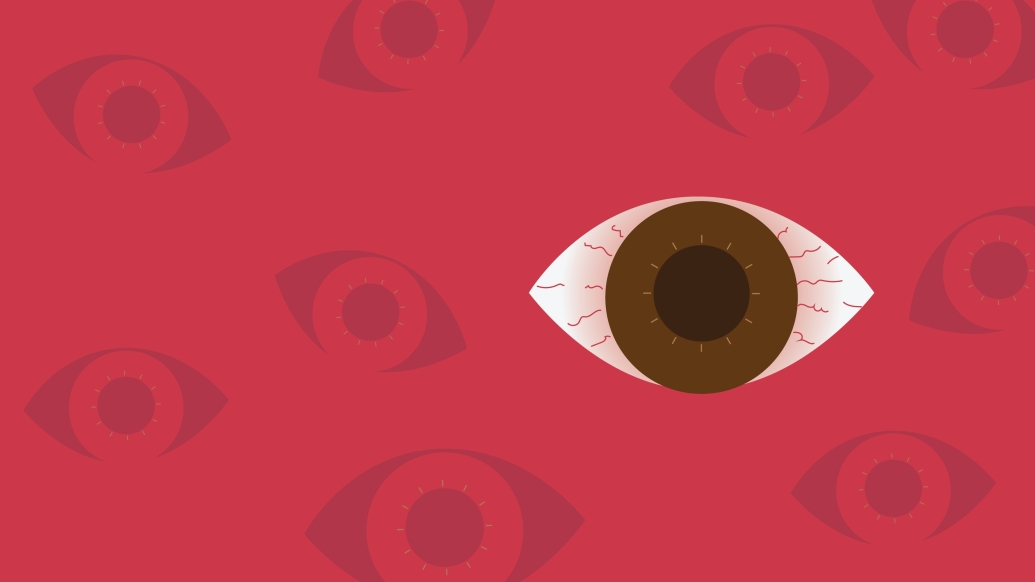Why do so many people, especially young adults, seek emergency care for mundane eye complaints? Researchers highlight the trend — and better options.
7:00 AM
Author |

Pinkeye isn't a medical emergency. Neither is a puffy eyelid.
MORE FROM THE LAB: Subscribe to our weekly newsletter
But a new study finds that nearly 1 in 4 people who seek emergency care for eye problems have those mild conditions. The work recommends ways to help those patients get the right level of care.
The University of Michigan-led national study examines nearly 377,000 eye-related emergency room visits by adults with private insurance over a 14-year period. Nearly 86,500 of those visits were for three conditions that don't ever need emergency treatment — and not only cost much more in an emergency setting, but also add to ER crowding.
Only about 25,300 were for true eye emergencies. The rest were somewhere in the middle. The results are published in Ophthalmology.
"Depending on the eye condition, the emergency room is the right choice for some patients, but not the best place for many others," says Brian Stagg, M.D., the study's lead author and a clinical scholar at the U-M Institute for Healthcare Policy and Innovation. "Our findings suggest that eye care professionals, insurers and emergency providers should work together to help people get the care they need for emerging eye issues, in the right setting."
Researchers found younger people, men, those with lower incomes or dementia, and people of color were more likely to seek emergency care for the three most common nonemergency conditions: conjunctivitis (pinkeye), blepharitis (swollen eyelids) and chalazion (eyelid bumps).
So-called emergency room "frequent fliers," who seek ER care four times a year or more for non-eye problems, were also more likely to do so for these eye conditions.
On the other hand, those who had been seeing an eye specialist — an optometrist or ophthalmologist — on a regular basis before their eye-related ER visit were much less likely to seek emergency care for an uncritical eye problem.
Stagg, an ophthalmologist, sees patients at the Kellogg Eye Center, which is part of Michigan Medicine, U-M's academic medical center. Although U-M emergency patients have access to a Kellogg specialist at all times, many ERs don't, he notes.
Our findings suggest that eye care professionals, insurers and emergency providers should work together to help people get the care they need for emerging eye issues, in the right setting.Brian Stagg, M.D., M.S.
Avoiding inappropriate ER use
Stagg hopes insurers and health providers can use the findings to curb ER visits for issues that don't need that level of care.
SEE ALSO: To Provide Better Eye Care, Ask More Questions in Advance
This might include telemedicine appointments where eye specialists can examine patients remotely or get images sent to them digitally. Co-author Maria Woodward, M.D., another Kellogg ophthalmologist and IHPI member, has studied the potential for such options to work for people with diabetes, who have a higher risk of eye problems.
Other ways to reduce inappropriate emergency care for routine eye issues might include incentives to primary care providers and eye specialists, to encourage more availability of after-hours appointments.
Stagg says the lack of eye specialists in low-income areas, and the inability of younger and lower-income people to take time off from work for an eye appointment, could lead them to seek care in an ER at night or on weekends.
This could help explain the disparities in ER use that the study reveals. Stagg and his colleagues are looking more closely at geographic and time factors.
Adding insurance coverage for regular eye exams for those who wear contacts or eyeglasses, so that they develop a connection to a regular eye provider they can consult when symptoms develop, might also cut down on inappropriate ER use.
Stagg and his co-authors, including U-M Medical School ophthalmology professor Joshua Stein, M.D., M.S., also see a connection between the Affordable Care Act and the overall trends in the data.
Their analysis reveals a 30 percent rise in all eye-related emergency visits during the study period, especially after 2011. Nearly all of this rise came in visits that they couldn't classify as clearly urgent or clearly nonurgent.
They believe it may be linked to the increase in younger adults covered under their parents' job-based insurance plans, allowed under the ACA since 2010. But they can't fully determine the case from their analysis and intend to explore the rise further.
The research was funded by the Michigan Institute for Clinical and Health Research; Research to Prevent Blindness; the W.K. Kellogg Foundation; the National Eye Institute (EY023596); and the National Clinician Scholars Program. The data for the study was from the Clinformatics Data Mart created by Optum Inc. and includes records from nearly 11 million people enrolled in a nationwide managed care organization from 2000 to 2014. Stein and Woodward are also members of IHPI.

Explore a variety of healthcare news & stories by visiting the Health Lab home page for more articles.

Department of Communication at Michigan Medicine
Want top health & research news weekly? Sign up for Health Lab’s newsletters today!





